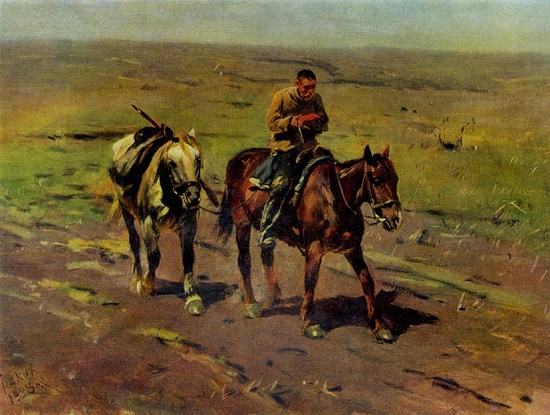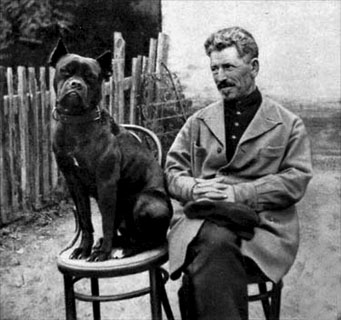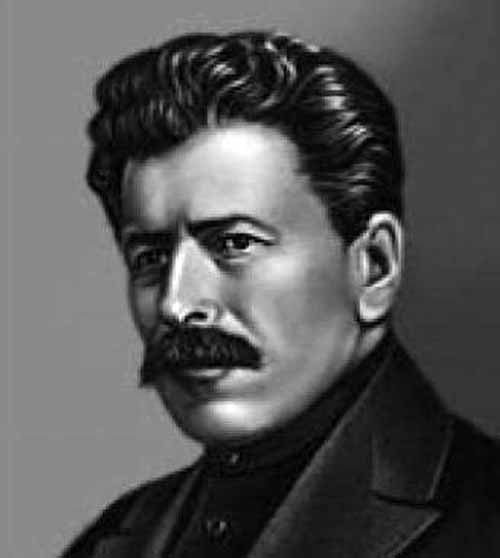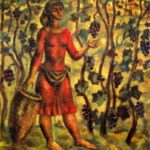Soviet artist Mitrofan Grekov 1882-1934

Banner Bearer and a trumpeter. 1934. Painting by Soviet artist Mitrofan Grekov (15 June 1882 – 27 November 1934)
Soviet artist Mitrofan Grekov
The founder of the Soviet school of battle painting came from the Sharpaevka farm of the present Rostov region. He studied at the Odessa Art College (1898-1903), then at the Petersburg Academy of Arts (1903-1911). A disciple of Ilya Repin and Francois Roubaud, he was a participant of the First World War, and spent three years at the front. In Civil war, serving in the Budyonny cavalry, one of the first turned to the display of combat episodes in painting. For a decade and a half (1918-1934) he created about 300 paintings, capturing in them the battle path of the First Cavalry Army and the image of the people who heroically fought for a new life.
Grekov’s paintings are characterized by historical authenticity, and a true re-creation of the atmosphere of the Civil War, which the artist took with his whole being. He masterly paints battle scenes, conveying the character and expression of the battle (“Tachanka”, “Cavalry Attack”, “Winter Campaign of the First Cavalry”, “Taking Novocherkassk”). Many canvases show the finest psychologism (“Kornilovtsy”, “In the detachment to Budyonny,” “Trumpeters of the First Cavalry Army”). But Grekov was also a great master of the landscape, which gave his paintings on the military theme artistic completeness (“Fight near Yegorlykskaya”, “Devil’s Bridge”, “Na Kuban” and others).
Mitrofan Grekov returned to the national fine arts, already Soviet, the genre of “stereo”. In 1929 the painter finished the diorama “The Taking of Rostov”. Death interrupted the work on the panorama “The Storm of Perekop.”
Grekov’s paintings with sincerity and simplicity show the heroic deeds of the Red Army in the Civil War. Many subsequently turned to this topic, but already on the materials of the archives and memoirs. Meanwhile, Grekov worked on the basis of personal experience.
Noteworthy, after the death of the battalist (November 27, 1934) by the order of the People’s Commissar of Defense, appeared a studio of Grekov artists. Accordingly, from 1966 to 1991, for the best canvases on the military-patriotic theme, the best artists received one gold and three silver medals named after MB Grekov. The awarding ceremony took place each year to the Victory Day. Unfortunately, nowadays this tradition for some reason disappeared.
Soviet artist Mitrofan Grekov

Musician of the 29th Cavalry Regiment. Study for the painting Trumpeters of the First Cavalry Army. Oil. 1934

The oxen in the plow. 1920 In 1911, for this work, the Academy of Arts awarded Grekov the title of academician
Sources
Illustrated album
Relay of traditions. Grekovtsy. Publisher “Izobrazitelnoye Iskusstvo”, Moscow. 1975
public group
vk.com/club59254370

























